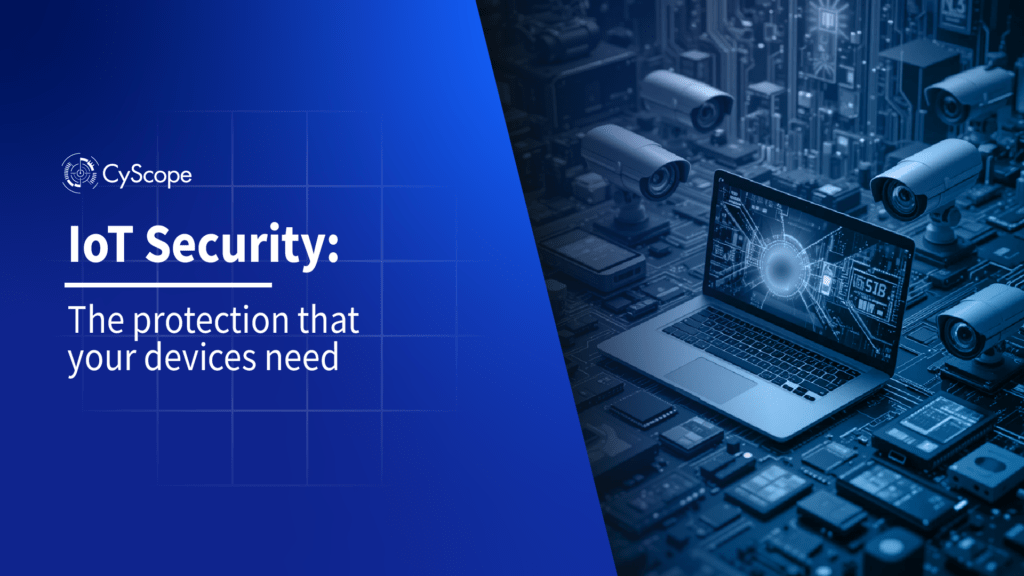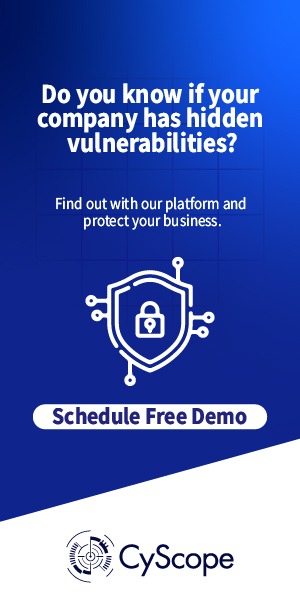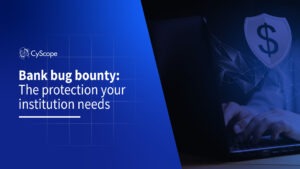Imagine a factory where products are assembled, sensors monitor the temperature in real time, and autonomous trucks manage the inventory. Now, imagine that a hacker takes control of those devices and paralyzes the entire operation. Scary, right? This isn’t a horror movie script: 57% of companies with IoT devices have suffered a cyberattack in the past two years, according to Palo Alto Networks. And the problem is growing: by 2026, there will be more than 27 billion connected IoT devices in the world.
Here’s what IoT security is, why it’s critical for businesses across all industries, and how CyScope’s offensive security platform, backed by more than 450 expert ethical hackers, can help you prevent your devices from becoming the gateway to a cyberattack.
What is IoT security, and why should you care?
IoT security refers to the practices, technologies, and measures designed to protect connected devices (such as sensors, cameras, wearables, or industrial machinery) and the networks that integrate them. Unlike a laptop or server, many IoT devices have hardware, software, or upgrade limitations, making them vulnerable if not properly secured.
Real-life example: In 2023, researchers demonstrated that IoT-connected insulin pumps from a well-known brand could be remotely manipulated due to flaws in their communication protocol (without strong authentication). This would allow an attacker to alter doses or disable devices.
Also read: 5 reasons to implement a DevSecOps process in your business
Top 4 IoT security challenges
1. Diversity of devices: Not all sensors, drones, or cameras have uniform security standards.
2. Default configurations: 80% of IoT attacks exploit default passwords or basic settings.
3. Unencrypted communications: Many devices send unprotected data to the cloud.
4. Physical access: An IoT device left in a warehouse or server room can be manipulated.
5 IoT security measures that every company should implement
1. End-to-end encryption: Protects data traveling between devices, networks, and the cloud.
2. Automated updates: Patches vulnerabilities in firmware and software.
3. Network segmentation: Isolate IoT devices in separate networks to limit the lateral movement of attackers.
4. Multifactor authentication (MFA): Prevents unauthorized access, even if credentials are stolen.
5. Recurrent detection: Detects anomalous behavior (e.g, a sensor sending data to an unknown IP).
How can CyScope increase the security posture of your IoT device?
- PTaaS (Penetration Testing as a Service): CyScope’s pentesters simulate specific attacks on your IoT devices (e.g, Exploitation of Remote Code Execution vulnerabilities in IoT devices exposed to the Internet).
- Bug Bounty Programs: We encourage our community of ethical hackers to find bugs in your IoT systems.
IoT security benefits for different sectors
- Health Sector: Protects connected pacemakers, patient monitors, and medical record systems.
- Mining Sector: Defends drilling sensors, autonomous trucks, and environmental monitoring systems.
- Retail industry: Protects surveillance cameras, intelligent inventory systems, and beacons for marketing.
- Manufacturing sector: Prevents sabotage of industrial robots, production lines, or automation systems.
- Banking sector: Defends smart ATMs, payment wearables, and biometric authentication systems.
You may be interested in: Pentest On Demand: Optimize your cybersecurity strategy
Conclusion: IoT security is strategic
IoT devices are here to streamline operations, but without protection, they can become your worst nightmare. The good news is that you don’t need an in-house team: CyScope’s offensive security platform offers everything you need in one place.
From specialized penetration testing to a global community of ethical hackers, we’re ready to help you build a resilient IoT ecosystem, regardless of industry.
Want to know if your IoT devices are vulnerable?
Schedule a free consultation with the CyScope team to learn how we can help you detect risks and operate safely.





